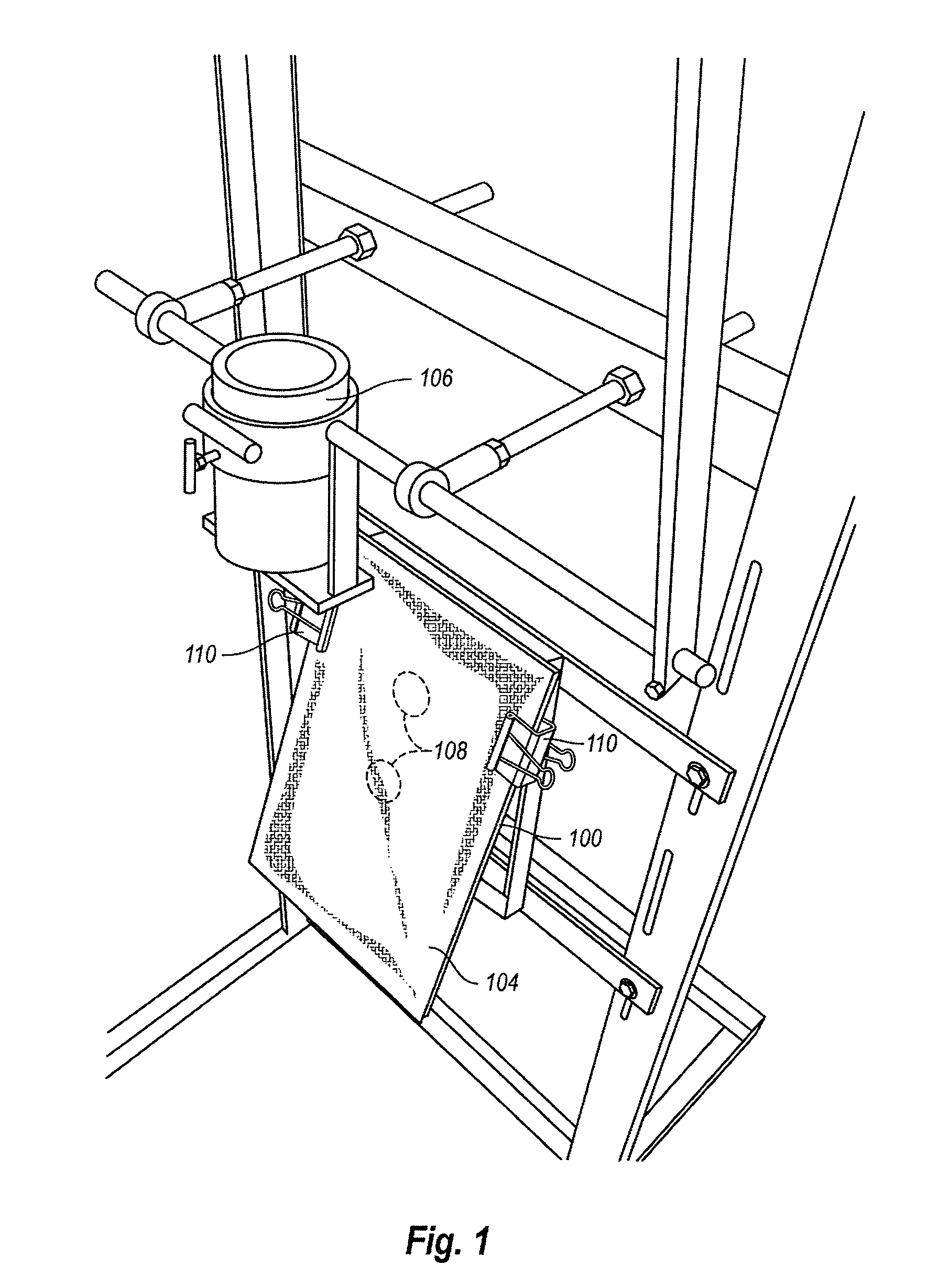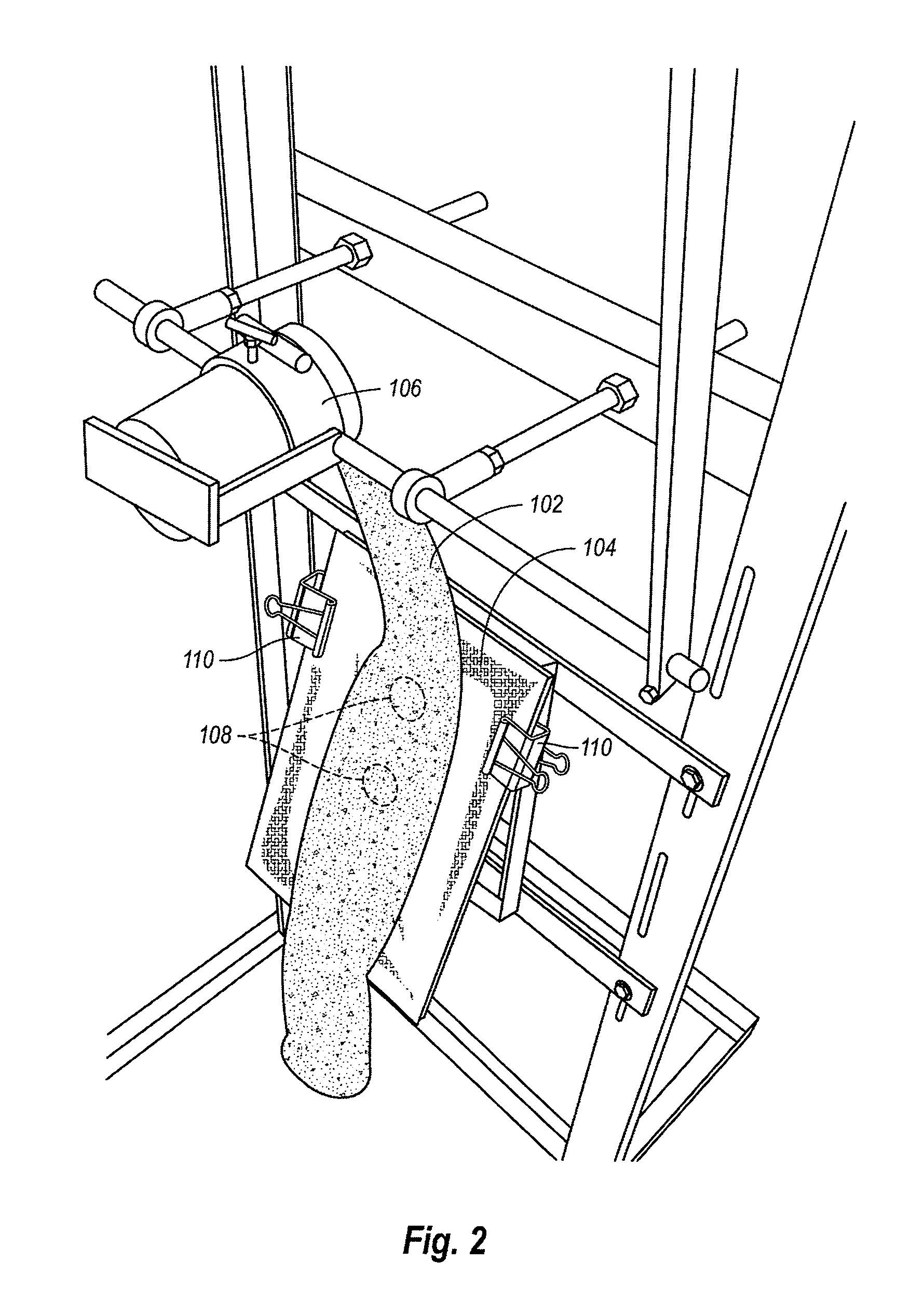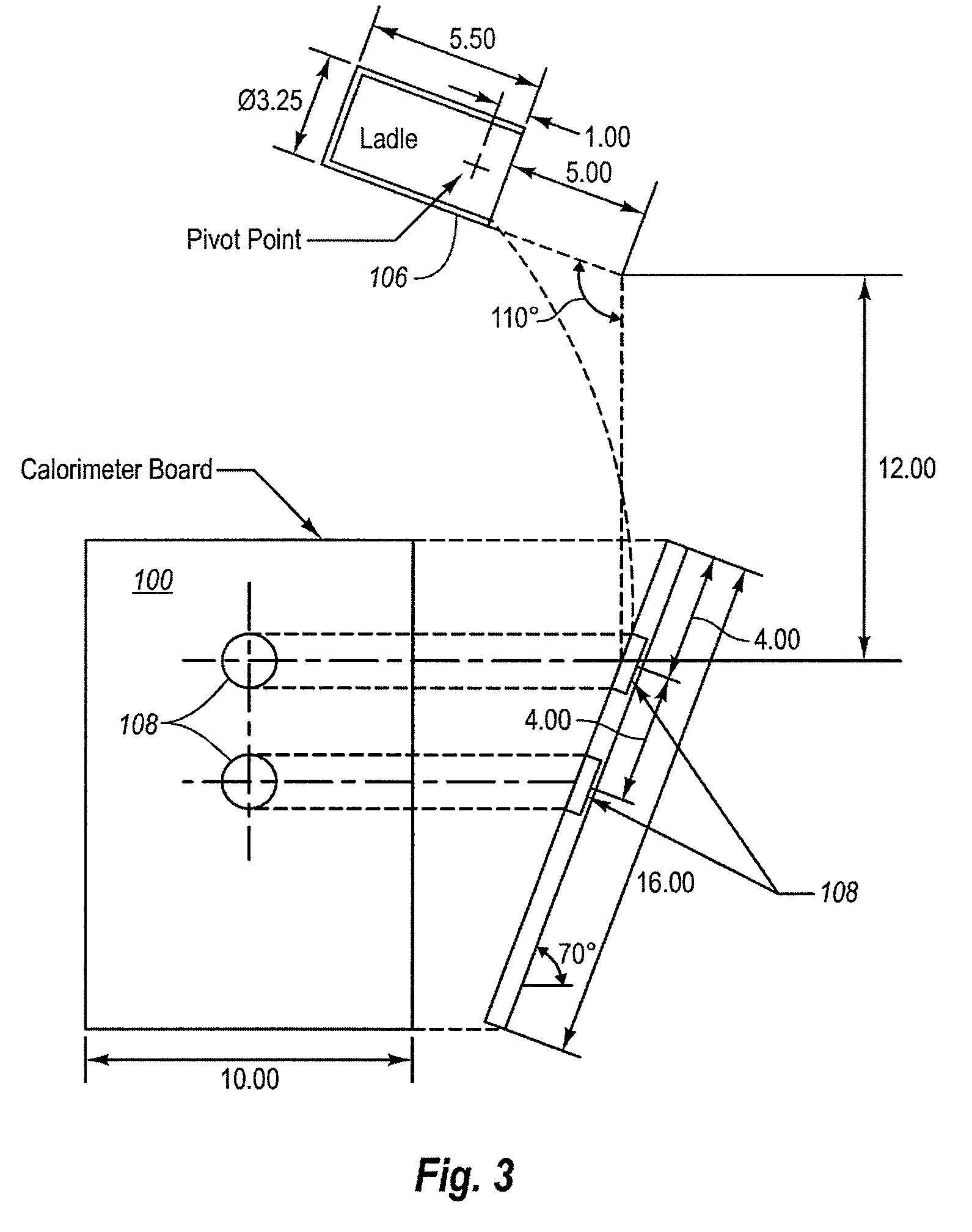[0014]The present invention encompasses novel yarns and fabrics that include a
high concentration of oxidized
polyacrylonitrile (O-Pan) fibers, which maintain a high level of fire retardance and
heat resistance, while also possessing improved tensile strength, abrasion resistance, durability, and the ability to shed liquids, gels, sparks, and molten metals. The inventive yarns include O-Pan fibers, typically combined with one or more strengthening fibers, and are coated on at least the exterior surface of the resulting fabric by a strengthening
coating, such as a
silicone polymer that further aids in shedding of liquids, gels, sparks, and molten metals. In one embodiment, all surfaces of the yarn are coated, encapsulating the yarn.
Coating or encapsulating the fire retardant and heat resistant yarn or fabric with a
silicone polymer increases the tensile strength, abrasion resistance, durability, and shedding capability of the yarn, as well as fabrics and articles made from such yarn.
[0015]The present invention combines the tremendous fire retardant and heat resistant characteristics of yarns made from O-Pan fibers with the strengthening and shedding properties imparted by a liquid-resistant
polymer coating capable of shedding liquids and gels. Furthermore, the combination of the polymer coating and O-Pan fibers unexpectedly results in a yarn and fabric capable of shedding hot materials such as sparks and molten metals. Simply coating or encapsulating the yarn of a conventional flammable fabric with a
silicone polymer coating cannot yield a fabric having a
flame retardance and
heat resistance that is even remotely similar to the level provided by O-Pan based fabrics. Moreover, coating or encapsulating
aramid-based materials with a liquid, spark, and
molten metal-resistant and strengthening silicone polymer coating does not alter the inherent tendency of fabrics formed from such materials to
char, shrink, and form holes when exposed to direct
flame and / or heated to above 600° F. Only by combining the tremendous fire retardant and heat resistant properties of O-Pan based fabrics with the strengthening aspects and shedding capabilities offered by coating at least the outer surface of the yarn or fabric that may come into contact with flammable liquids,
molten metal, or sparks can true
synergy be obtained (i.e., the ability to provide the highest level of fire retardance and heat resistance to a fabric, while also providing enhanced tensile strength, abrasion resistance, durability, and liquid, gel, spark, and molten
metal shedding capabilities, all of which synergistically contribute to the ability of the fabric to protect a wearer from fire and heat).
[0016]The failure to provide all of these features in a single fabric can greatly undermine the otherwise excellent protection from fire. For example, even though conventional CARBONX fabrics provide superior protection against fire, heat and burns compared to other leading fire resistant fabrics such as the leading
aramid “fire retardant” fabrics, such protection can be compromised if the fabric lacks sufficient tensile strength, abrasion resistance and durability for a given application. The fabric will typically only protect the wearer to the extent the fabric is able to maintain its
structural integrity when protection is needed most, i.e., a fabric designed to protect the
skin advantageously remains positioned between the wearer's body and the heat source to provide maximum protection. An inadvertent hole or tear can provide a conduit through which heat and flame can breach the otherwise continuous
protective shield. Because of the generally weaker nature of O-Pan based fabrics compared to conventional fabrics, coating or encapsulating the yarn comprising O-Pan based fabrics with a strengthening polymer provides a much greater incremental benefit with regard to tensile strength, abrasion resistance, and durability compared to conventional fabrics which are stronger to begin with.
Coating or encapsulation of the O-Pan based yarn with a liquid shedding polymer also greatly increases the ability of the O-Pan based fabric to shed liquids and gels, including flammable liquids and gels as well as sparks and molten
metal. This shedding capability is important as it more quickly removes the heat source from the exterior of the fabric so as to prevent
heat transfer through the fabric to the wearer's
skin.
[0017]Thus, coating or encapsulating the yarn of O-Pan based fabrics with a liquid / gel / spark / molten
metal-resistant and strengthening polymer reduces the tendency of such fabrics to form holes or
tears while protecting the wearer from flame and heat, and it helps such fabrics to shed liquids and gels, including flammable liquids and gels that can engulf the wearer in flames if absorbed into the fabric. Such encapsulation is also effective in providing the fabric with the ability to shed sparks or molten metal that may otherwise remain on the fabric, transferring heat through the fabric to the underlying
skin or forming a hole.
Coating or encapsulation of the O-Pan based yarn with a liquid / gel / spark / molten metal-resistant and strengthening polymer coating greatly increases the range of situations where O-Pan based fabrics can provide superior protection from heat and flame as intended, even though the liquid-shedding, spark-shedding, and molten metal-shedding and strengthening polymer may not itself provide any significant incremental heat or
flame resistance beyond that which is already provided by the O-Pan based fabric. The high level of heat and
flame resistance is provided mainly or exclusively by the O-Pan based fabric. The coating or encapsulation of the O-Pan yarn comprising the fabric with a liquid / gel / spark / molten metal-resistant and strengthening polymer coating mainly provides the auxiliary benefits of increased tensile strength, abrasion resistance, durability, and shedding capability (e.g., flammable liquids and gels, sparks, and molten metal). Nevertheless, the overall protection to the wearer against flame and heat is greatly enhanced by the auxiliary benefits imparted by coating or encapsulating the yarn with a liquid / gel / spark / molten metal-resistant and strengthening polymer coating, demonstrating the synergistic effect of combining O-Pan based fabrics with polymer coating of the yarn comprising the fabric.
[0019]Exemplary liquid / gel / spark / molten metal-resistant and strengthening
polymer coatings include a wide variety of curable silicone-based polymers and polysiloxanes. According to one embodiment, such polymers are encapsulated over the individual yarn strands of a tensioned fabric that is drawn through a bath of shear thinned
polymer resin. Thereafter, the
polymer resin is cured to form the final encapsulated yarn. This process advantageously only encapsulates the yarn strands but leaves spaces between the yarn strands that are woven or knitted together so as to permit the treated fabric to breathe. In this way, the treated fabric still feels and behaves more like an ordinary fabric rather than a laminate sheet or plugged fabric.
[0022]According to one embodiment, the yarn or fabric may be pre-treated with a fluorochemical prior to coating or encapsulation with the polymer coating. Pre-treatment with a fluorochemical may assist in helping the polymer coated yarn or fabric to repel or shed liquids and gels, such as water and hydrocarbons as well as other dangerous environmental hazards such as sparks and molten metal. The fluorochemical may advantageously be applied as a suspension or solution in combination with a
solvent that is driven off by
evaporation. Thereafter, the silicone polymer is applied to the yarn or fabric in order to coat or encapsulate the yarn strands or fabric substrate. The fluorochemical is at least partially impregnated into the yarn.
 Login to View More
Login to View More 


